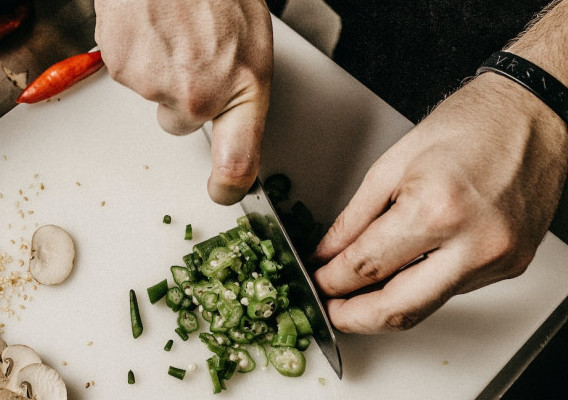
Cultivating Inner Peace: Exploring Mindfulness Techniques for a Balanced Life
Introduction
In our fast-paced and demanding world, finding inner peace and balance is crucial for our overall well-being. Mindfulness, a practice rooted in ancient traditions, has gained significant attention for its ability to cultivate a state of awareness and presence in the present moment. In this article, we will delve into various mindfulness techniques that can help you develop a deeper sense of self-awareness, reduce stress, and enhance your overall quality of life. By integrating these techniques into your daily routine, you can nurture a more peaceful and balanced state of being.
- 1. Mindful Breathing
One of the fundamental mindfulness techniques is mindful breathing. By focusing your attention on your breath, you bring yourself into the present moment. Take slow, deep breaths, paying close attention to the sensation of the breath entering and leaving your body. Allow your breath to anchor you, guiding your attention away from distractions and into the present.
- 2. Body Scan Meditation
Body scan meditation involves systematically focusing your attention on different parts of your body, starting from the top of your head down to your toes. As you bring awareness to each area, notice any sensations or tension without judgment. This practice helps develop a deep connection between your mind and body, fostering a sense of relaxation and releasing physical and mental stress.
- 3. Mindful Eating
Mindful eating encourages you to savour each bite and engage your senses fully. Slow down and bring awareness to the textures, flavours, and smells of your food. Notice the sensations in your mouth and the act of chewing. By eating mindfully, you develop a healthier relationship with food and become more attuned to your body’s hunger and fullness cues.

- 4. Walking Meditation
Walking meditation involves bringing mindfulness to your everyday walks. As you walk, focus your attention on the sensation of your feet touching the ground, the movement of your body, and the surrounding environment. Be fully present in each step, letting go of distracting thoughts and simply experiencing the act of walking.
- 5. Loving-Kindness Meditation
Loving-kindness meditation involves cultivating feelings of love, compassion, and kindness toward yourself and others. Start by directing these feelings toward yourself, then extend them to loved ones, acquaintances, and even challenging individuals. Repeat phrases or affirmations of well-wishes in your mind, such as “May I be happy, may I be healthy, may I be safe.” This practice enhances feelings of empathy, reduces negativity, and promotes emotional well-being.
- 6. Mindful Journaling
Mindful journaling provides an outlet for self-reflection and emotional processing. Set aside dedicated time to write down your thoughts, emotions, and experiences without judgment. Explore your thoughts and feelings with curiosity and acceptance, allowing yourself to gain insights and clarity. This practice encourages self-awareness, self-expression, and personal growth.
- 7. Mindful Technology Use
In today’s digital age, mindful technology use is essential. Set intentional boundaries by designating tech-free periods or creating device-free zones in your home. When using technology, practice awareness of your habits and the impact they have on your well-being. Slow down and engage in mindful activities, such as mindful browsing or using apps specifically designed to promote mindfulness and meditation.
- 8. Mindful Movement
Engaging in mindful movement practices, such as yoga, tai chi, or qigong, allows you to connect mind and body through intentional movement and breath awareness. Pay attention to the sensations, the alignment of your body, and the flow of your breath as you move through each posture or exercise. This practice cultivates physical strength, flexibility, and mental clarity while fostering a deep sense of presence and relaxation.

- 9. Mindfulness in Daily Activities
Bringing mindfulness into your daily activities can transform ordinary moments into opportunities for inner peace and reflection. Whether it’s washing dishes, brushing your teeth, or taking a shower, approach these activities with full presence and attention. Notice the sensory experiences, the movements, and the sensations involved. By infusing mindfulness into your daily routine, you cultivate a greater appreciation for the present moment and cultivate a sense of calm amidst the busyness of life.
- 10. Mindfulness in Communication
Mindful communication involves being fully present and attentive when engaging in conversations with others. Listen actively, without interrupting or formulating responses in your mind. Pay attention to non-verbal cues, emotions, and the nuances of the conversation. By practicing mindful communication, you build deeper connections, enhance empathy, and foster harmonious relationships.
Conclusion
Mindfulness techniques offer powerful tools to cultivate inner peace, reduce stress, and enhance overall well-being. By incorporating practices like mindful breathing, body scan meditation, mindful eating, walking meditation, loving-kindness meditation, mindful journaling, mindful technology use, mindful movement, mindfulness in daily activities, and mindfulness in communication, you can create a balanced and fulfilling life.
Embrace these techniques, making them an integral part of your daily routine, and discover the transformative power of mindfulness as you navigate the challenges and joys of life with greater awareness, presence, and compassion






Hey, love it. The mindfulness advice you give is very thorough and honest in a way that helps not just others but yourself. I see a lot of people that go through stressful moments and deal with a fast-paced industry. The techniques that you provide here are what an individual needs. I see big names use this practice a lot, one of those names was Kobe Bryant RIP. The legends used those practices to help him grow.
Good job on a well-written and organized article on mindfulness.
You offer concrete techniques from mindful breathing to walking meditation, and I like that each technique serves as an important reminder to slow down, be present, and reconnect with our surroundings.
Your implication that mindfulness can be transformative not just for ourselves but also for our relationships was interesting.
In a world that prioritizes busyness and productivity, this article serves as a good reminder to slow down, breathe, and find priority in the present moment.
Overall, this article is a good resource for anyone seeking a more balanced and fulfilling life.
This article on mindfulness techniques truly resonated with me and provided a wealth of valuable insights. Mindfulness is a concept that has gained significant popularity in recent years, and this article serves as an excellent guide for anyone looking to incorporate mindfulness into their daily lives.
The article starts by offering a clear and concise definition of mindfulness, emphasizing its transformative power in fostering self-awareness and cultivating a sense of presence. I appreciated how you explained the importance of mindfulness as a tool for managing stress, improving focus, and enhancing overall well-being.
this article is a comprehensive and enlightening resource for anyone interested in embracing mindfulness in their lives. It offers a treasure trove of techniques, insights, and practical guidance that can help individuals cultivate a deeper sense of presence and find inner peace. I highly recommend this article to anyone seeking to enhance their well-being and connect with the present moment. Thank you for sharing such valuable information and empowering readers to embark on a path of mindfulness.